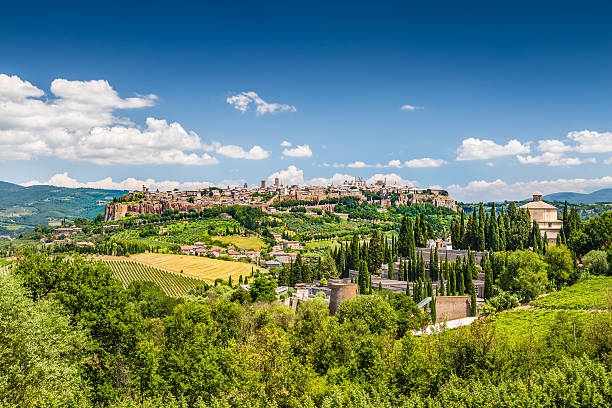Wines
Orvieto Classico Terre Vineate Doc
Our years of experience have enabled us to choose a specific portion of our Palazzone vineyard for the production of this wine. It has a perfect aspect and we carry out careful pruning to leave the best possible bunches of the Procanico and Grechetto grapes with which to make our Terre Vineate. The name comes from the medieval quarter in which our vineyard is situated.
| Grape varieties | Procanico 50% Grechetto 30% Verdello, Drupeggio, Malvasia 20% |
| Tasting notes | This wine is of an intense straw color. It has an elegant nose that gradually releases a vivid and definite perfume of the white fruit from which it is made. In the mouth the impact is dense and dry and these two sensations balance each other so that the perfume is matched by a somewhat dry finish. |
| Serving suggestion | This wine is best suited to rich dishes that include sauces of meat or fish and it also goes well with spicy dishes. |

Palazzone
In 1969 the Dubini family bought the property Palazzone, constructed by Cardinal Teodorico at the bidding of Pope Boniface VIII as a hostel for pilgrims on their way to Rome to celebrate the Jubilee of 1300 A.D. Today after a restoration with respect for the noble architecture, Palazzone” is a boutique hotel with elegant suites. The hilly portion of the land adjacent to Rocca Ripesena, with its superb view of Orvieto on its majestic crag, consisted of sedimentary soil and clay.
Angelo Dubini decided to plant 25 hectares to vines of varieties that he expected would make wine of great complexity and character. In 1982 his two sons, Giovanni and Lodovico, made the first small vintage from these grapes. In 1988 their vintage was sufficient to justify the construction of a winery to process all their own grapes and also to organise and begin the commercial marketing of what is now Palazzone”wine regarded as one of the most significant labels in Umbria.

Umbria
With neighbours in Marche, Tuscany and Latium, Umbria’s rolling hills are well suited to viticulture. Although its output is less than a third of that of Tuscany, the region is gaining a reputation for unique modern wines at a fraction of the price of its celebrated neighbour. One of Umbria’s most famous exports is Orvieto, an appellation that has long pleased consumers in both its traditional abboccato style and as a modern dry wine. The golden, off-dry abboccato and amabile styles have recently been rediscovered as dessert wines. Although the local Procanico often dominates the blend, various grape varieties are permitted, including Malvasia and Grechetto.



